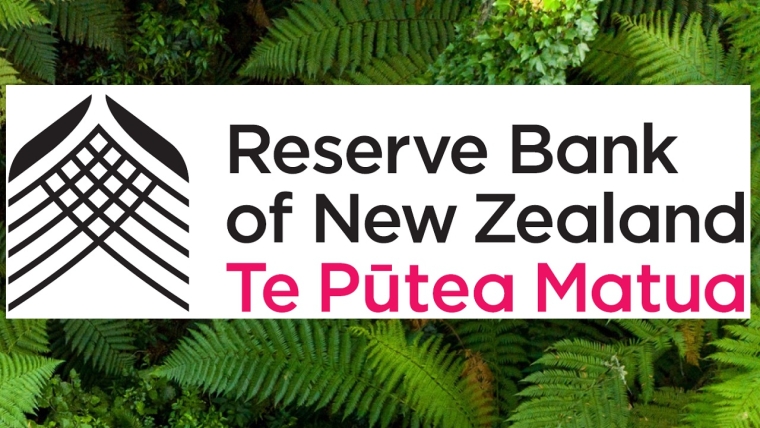
The Reserve Bank today announced a facility to improve the anchoring of wholesale short-term interest rates at the Official Cash Rate (OCR).
From 20 July 2022, the Reserve Bank will allow eligible counterparties to lend New Zealand dollars (NZD) through a Standing Repurchase (Repo) Facility.
The initial settings for the Standing Repo Facility are as follows, and will be subject to regular review:
- The Standing Repo Facility will allow for eligible counterparties to lend NZD overnight and from tomorrow to the next day, on a secured basis.
- The collateral provided by the Reserve Bank as security for the NZD will be nominal NZ Government Bonds (NZGBs) as general collateral.
- NZD deposited through the Standing Repo Facility will be remunerated at the Official Cash Rate (OCR) less 15 basis points.
- Settlement may occur on a same-day or a T+1 basis (transaction day plus 1 banking day).
- The Standing Repo Facility will be available between 3:00pm and 4:00pm New Zealand Time every business day and a total facility size of $5 billion will be available for each value date.
- The operation of this facility and the rules and guidelines applying to it are detailed on the Operating Rules and Guidelines page.
The facility will be available from 20 July 2022.
Details of the Standing Repo Facility will be published on the Reserve Bank’s pages on Bloomberg and Refinitiv, and on the Reserve Bank’s Standing facilities (D12) statistical tables.
This facility announcement relates to the implementation of monetary policy, and has no implications for the Reserve Bank's monetary policy stance.
Q&As for the Standing Repo Facility
Why is the Reserve Bank introducing a Standing Repo Facility?
Short-term interest rates have generally traded at or near to the OCR since the removal of credit tiers on ESAS accounts in 2020. At very high levels of settlement cash, the Reserve Bank has noted some instances where short-term market rates have traded below the OCR. The Reserve Bank is reviewing its facilities and operations to ensure that short-term market rates remain well-anchored at all levels of settlement cash.
The purpose of the Standing Repo Facility (SRF) is to help anchor short-term market interest rates near the OCR by allowing a wider range of counterparties, particularly non-ESAS participants, access to a deposit facility remunerated at a rate near the OCR.
How will the Standing Repo Facility be used?
The Reserve Bank will allow registered counterparties to deposit NZD with the Reserve Bank on an overnight or tomorrow-next basis. In exchange for depositing NZD, the Reserve Bank will deliver to the counterparty nominal New Zealand Government Bonds (NZGBs) as collateral.
A Standing Repo Facility details page will be published on the Reserve Bank pages on Bloomberg and Refinitiv at 11:00am NZT each day, outlining volumes available for each tenor (overnight and tomorrow-next) and the facility interest rate. The Reserve Bank will allow up to a maximum of $5 billion of NZD to be deposited against bonds in aggregate per offered settlement date. For example, if $2 billion of NZD was deposited in the tomorrow-next tenor the day prior, then only $3 billion will be available in the overnight tenor that day.
Registered counterparties can call the Reserve Bank’s Portfolio Management team using the dedicated dealing lines between 3:00pm and 4:00pm NZT to request use of the facility. The facility will operate under a first come, first served basis. A results page will be published as soon as possible after the window close.
Why is the Standing Repo Facility priced at OCR minus 15 basis points?
The facility pricing represents a trade-off between effectively anchoring rates and retaining an incentive for activity in the private general collateral repo market. The Reserve Bank will regularly review the operational design of facility, and the facility can be adjusted over time as required.
Why is there a maximum limit of $5 billion per settlement date?
The $5 billion facility limit is an initial setting designed to allow for careful monitoring of usage and the resultant impact on both short-term market rates and the level of settlement cash, as well as market feedback. The Reserve Bank will regularly review the operational design of facility, and the facility can be adjusted over time as required.
How often will the Standing Repo Facility be reviewed?
The Reserve Bank will regularly review the operational design of facility, based on usage, financial market conditions, and market feedback to ensure that short-term market interest rates trade at or near the OCR.
What is a general collateral repurchase agreement?
General collateral repo transactions are those for which the specific security provided as collateral are not identified until after other terms of the trade are agreed. The Standing Repo Facility will provide nominal New Zealand Government Bonds (NZGBs) as collateral for the transaction, with the exact bond provided at the Reserve Bank’s discretion.
How will the level of settlement cash impact on the Standing Repo Facility?
We expect that usage of the SRF will be higher when the settlement cash level is high and short-term market interest rates are trading below the OCR. When the settlement cash level is lower and short-term market rates are trading closer to the OCR, there will be less incentive for market participants to use the facility.
How does the Standing Repo Facility impact the Reserve Bank balance sheet?
The Reserve Bank’s balance sheet size will remain the same with usage of the facility, but the composition of liabilities will change. The deposit of cash under the repo transaction will reduce settlement cash on the RBNZ’s balance sheet, and increases repo liabilities by an equal and offsetting amount.
How is the Standing Repo Facility different to the Bond Lending Facility?
The SRF allows counterparties to deposit NZD in exchange for nominal NZGBs as general collateral, thereby earning a rate near the OCR on their investment.
The Bond Lending Facility (BLF) allows approved counterparties to borrow specific New Zealand government bonds from the Reserve Bank. Counterparties will use the BLF when a specific bond is difficult to source in the secondary market. The facility aims to mitigate settlement failures in the inter-bank market.
Both facilities will be offered at the same time, between 3:00pm and 4:00pm NZT every day. The BLF is currently remunerated at the OCR minus 25 basis points, a lower interest rate than the SRF, due to the specific nature of the bonds being lent.
Why don’t all market participants have ESAS accounts?
Market participants who apply for an ESAS account must meet RBNZ access criteria. There are a number of factors to determine whether an applicant is eligible. Note that the Reserve Bank has recently initiated a review of its access policy and criteria for ESAS (settlement) accounts (see link below). For some market participants, administration or financial infrastructure costs may also limit the benefit of having an ESAS account rather than operating through a settlement bank.
Who can use the Standing Repo Facility?
Market participants can access RBNZ facilities and operations by registering as domestic counterparties. Domestic counterparty registration allows a broader range of market participants access to facilities and operations priced near the OCR, without requiring an ESAS account. Market participants must register as a counterparty to participate in Open Market Operations (OMOs) and use the Overnight Reverse Repo Facility (ORRF), SRF, and the BLF.
Applicants must be financial institutions with a regular presence in the wholesale financial markets either as a market participant or as a Financial Market Infrastructure (FMI) that contributes to the soundness and efficiency of the New Zealand financial system. Participation in Repurchase Transactions offered in OMOs, and available through the ORRF, SRF, and the BLF requires the execution of a 2011 Global Master Repurchase Agreement (“GMRA”) with the RBNZ. The Reserve Bank will process each application on a case by case basis. The RBNZ Operating Rules and Guidelines for Domestic Markets provides further information on registered counterparty applications.
16 Comments
"We've just noticed that the shit might hit the fan. In a break from tradition, we've decided to prepare for that in advance."
As someone explained to me, it's little more than confidence tricks and signalling to the wider world that 'everything is OK'.
The short end should have a floor, particularly when you have certain pockets with excess liquidity circumventing your policy rates
For those interpreting this facility as a liquidity tool to prevent economic stress, I suggest you do some reading before commenting on technical monetary policy topics. It is actually designed to stop the cash rate trading below the RBNZ OCR.
Not sure that makes any sense to me, but let's assume you're right. Obviously the interbank rate should be higher than or the same as the OCR. You know, in a normally functioning world.
Re read the article JC it's to prevent the cash rate falling below OCR, not rising. Also the headline is a misnomer as it's a borrowing facility not a lending facility.
Yes. But let's think about this intuitively. Why should the cash rate be below the OCR?
Because there is excess liquidity in the system from QE.
Because there is excess liquidity in the system from QE.
You've lost me
That liquidity issue is generally solved by paying OCR on reserves noted above :
Short-term interest rates have generally traded at or near to the OCR since the removal of credit tiers on ESAS accounts in 2020. At very high levels of settlement cash, the Reserve Bank has noted some instances where short-term market rates have traded below the OCR. The Reserve Bank is reviewing its facilities and operations to ensure that short-term market rates remain well-anchored at all levels of settlement cash.
But if there is a pristine government bond collateral shortage and O/N repo borrowing rates crash well below the OCR it can be rectified by the above mentioned RP agreements or new issuance of the special securities.
The Reserve Bank is reviewing its facilities and operations to ensure that short-term market rates remain well-anchored at all levels of settlement cash.
Which suggests to me that there is a disconnect somewhere. And all I really see here is the central bank tinkering for the benefit and wellbeing of the banks.
Surely there is a connection to collateral, which we know is falling in value and the consequent lack of confidence in counter-party position?
A question rather than a statement, but that is my uneducated thought...in other words an underwrite.
Which would also suggest a lack of liquidity rather than too much....to my mind anyway.
The collateral in question is/are Government bonds which are falling in value as rates rise but it is trivial.
So the lending facility is necessary or not? Whose purpose does it serve? And what are the costs and benefits?
It effectively puts a lower bound on the cash rate. It prevents excess liquidity in the system pushing the cash rate lower than their target. The actual cash rate can deviate from the RBNZ cash rate if there is excess liquidity, for example if the holder of NZ$ are not a clearing member or local banks do not want the cash.
How long before Orr is on Westpac's board?

We welcome your comments below. If you are not already registered, please register to comment
Remember we welcome robust, respectful and insightful debate. We don't welcome abusive or defamatory comments and will de-register those repeatedly making such comments. Our current comment policy is here.